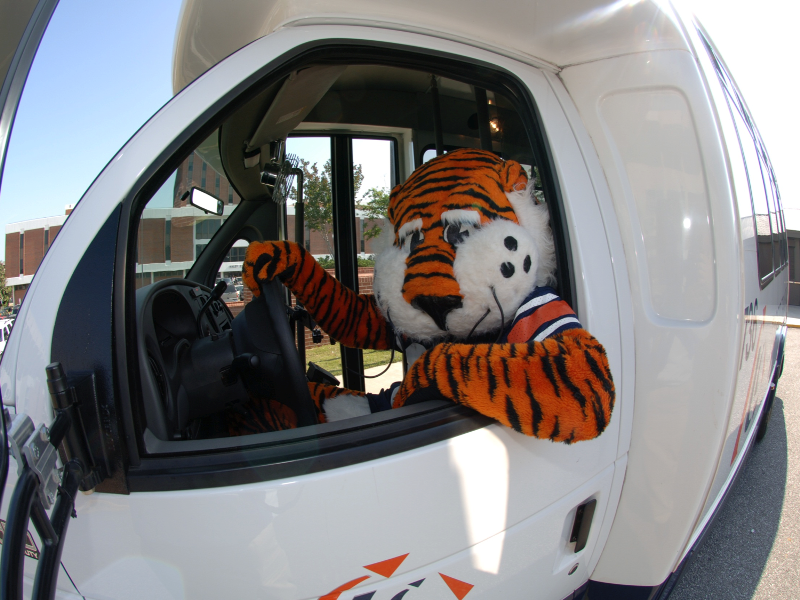
Research shows that one of the main reasons people don’t use transit is the inherent uncertainty involved, and Rex Huffman, manager of transit services, saw this as an issue his team had to address. He hoped to alleviate his riders’ anxiety by providing real time location and arrival times.
Management advantages of a system like this were obvious to Rex. Replay technologies, reporting and dispatching capabilities, and complete fleet visibility, were sure to benefit Tiger Transit. However, rider happiness was the most important factor in implementing real time bus tracking at Auburn.
After carefully evaluating various real-time options, Rex and his team traveled to see TransLoc in action at North Carolina State University. “We did an onsite evaluation, and that was really the decision making factor to go with TransLoc… The bus came within two seconds of where the app showed it was located.” says Rex. Auburn found TransLoc to be their best option for many other reasons too, including:
• A strong rider focus
• Faster tracking frequency (second-by-second)
• Clear route displays
• Web-based management
Because adopting the system would raise transportation fees, buy in from students was essential in implementing TransLoc. Auburn Transportation and the Student Government Association worked together to demonstrate to students the positive changes TransLoc could bring to campus. And in rare fashion, students welcomed a fee increase.
Since installing TransLoc, students at Auburn report increased satisfaction and trust in their transit system, as evidenced by a 333% growth in ridership from 2002-2012. The university is keeping 5,000 cars off the road twice a day and was awarded a STARS silver rating in sustainability. Not only are riders happier and less anxious about using transit at Auburn, but they have successfully achieved the university’s strategic goal of creating a pedestrian only campus core.